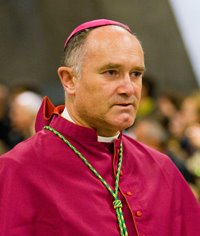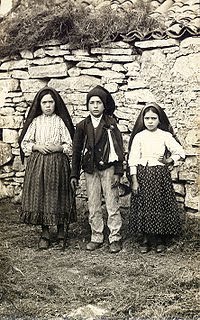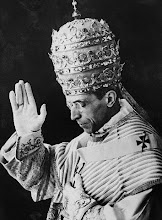That’s just the problem in a nutshell, isn’t it? If the liturgical reform itself was bungled—and, in the wake of the scathing critiques of Gamber, Ratzinger, Nichols, Lang, Mosebach, Robinson, Reid, et alia, it is no longer intellectually honest to think that it was not, in some very important respects—and, what is worse, if its implementation was still further compromised by the prevailing secularism of the environment into which it was launched, one must ask: What version, or rather, what caricature, of Vatican II did those many people perceive whose idea of the Council came, perhaps exclusively, from the liturgical revolution?
They took in little or nothing of the authentic doctrine of the Council—the salubrious doctrine that, according to John XXIII’s intention and the very words of Vatican II itself, fully accorded with the teaching of former ecumenical councils, especially those of Trent and Vatican I. Instead of bread, the faithful were given a stone. Instead of substantive content, the faithful were given a hermeneutic, a manner of viewing the Church, her teaching, her tradition, her liturgy—and it was decisively one of rupture and discontinuity. To be Catholic in those heady days meant to be different, to be other, to be up-to-date; it certainly did not mean to be stably the same, consistent with one’s past, reliant on tradition. The Church was no longer the Mystical Body and Immaculate Bride of Christ; the Church was reform, reform without an end in sight, without even much of a plan, reform for the sake of reform. As the famous Protestant theologian Karl Barth asked in the wake of the Council: “When will the Church know that it is sufficiently updated?” I think that’s what you call a rhetorical question.
Tragically, generations of clergy have been trained in the same hermeneutic of rupture and discontinuity, including most of the world’s bishops. That is why the unexpected resurgence of traditional forms of faith and worship among young people, mounting at times to passionate commitment, is a source of bewilderment, consternation, and even anger to them. Due to their training and mental habits, such clergy equate today’s liturgy and its multitudinous aberrations with Vatican II, and hence equate a love of or preference for the traditional liturgy and the culture surrounding it with a rejection of Vatican II. This might be true for some people, but it isn't true across the board, and it need not be true at all.
It does not seem to matter that the traditional liturgy and the integral Catholic life it sustains is, in fact, profoundly in harmony with the best and greatest teachings of the Council—one need only think of Lumen Gentium, Dei Verbum, and even Sacrosanctum Concilium. It does not matter that Pope Benedict XVI, the greatest theologian to sit on the Chair of Peter for centuries, saw continuity between his own liturgical doctrine and praxis and that of the Council to which he made significant contributions. No, it does not matter, because it doesn’t look that way to Catholics ignorant of the Council’s documents, ignorant of the liturgical patrimony of the Church, and poorly formed by almost fifty years of liturgical abuse.
What is necessary today is to show, patiently, persistently, and accurately, with the humility and confidence born of careful study, that the fathers of Vatican II did not desire or ask for the liturgical reform that came out of Bugnini’s Consilium, that the Novus Ordo Missae is not in full accord with Sacrosanctum Concilium (see here or here), and that the teaching of the sixteen official documents of Vatican II supports rather than dismantles traditional Catholic theology and piety. The least we can do, in any case, is not to allow ourselves to be tossed to and fro, carried about by every wind of secondhand half-truths or tendentious readings that emphasize rupture, whether modernist or traditionalist in source.
It is true that there are problems, difficulties, and ambiguities in the conciliar documents. It is true that not every formulation is immune to legitimate criticism—even Ratzinger complained that parts of Gaudium et Spes were “downright Pelagian.” And it is beyond doubt that there were bishops and periti at the Council who sought to infuse modernism into the documents and, to some extent, succeeded in influencing the formulations. But it is still more certain that the final documents, reviewed so many times and passed through the crucible of papal and conciliar scrutiny, are, with few exceptions, sound in content and form; and it is most certain that they are free from error in faith and morals, being the formal acts of an ecumenical council and solemnly promulgated by the Pope. We must never, as it were, abandon the Council to the modernists; this would only play into the devil’s hands.
In any case, it is not simply this most recent Council that gives us our map and marching orders; it is the entirety of Catholic Tradition and the totality of the Magisterium for the past 2,000 years, of which this Council is but a part, and within which it is rightly understood. We know that in principle, no reading of Vatican II can possibly be right that results in formal contradiction between past and present. We are guided by all of the Church’s teaching, not just the most recent. Indeed, we are blessed to belong to a body that, while it develops over time, cannot essentially change. The partisans of perpetual change can have their bizarre liturgies and politically correct catechisms, but they will no longer—or not for much longer—be Catholics.












No comments:
Post a Comment